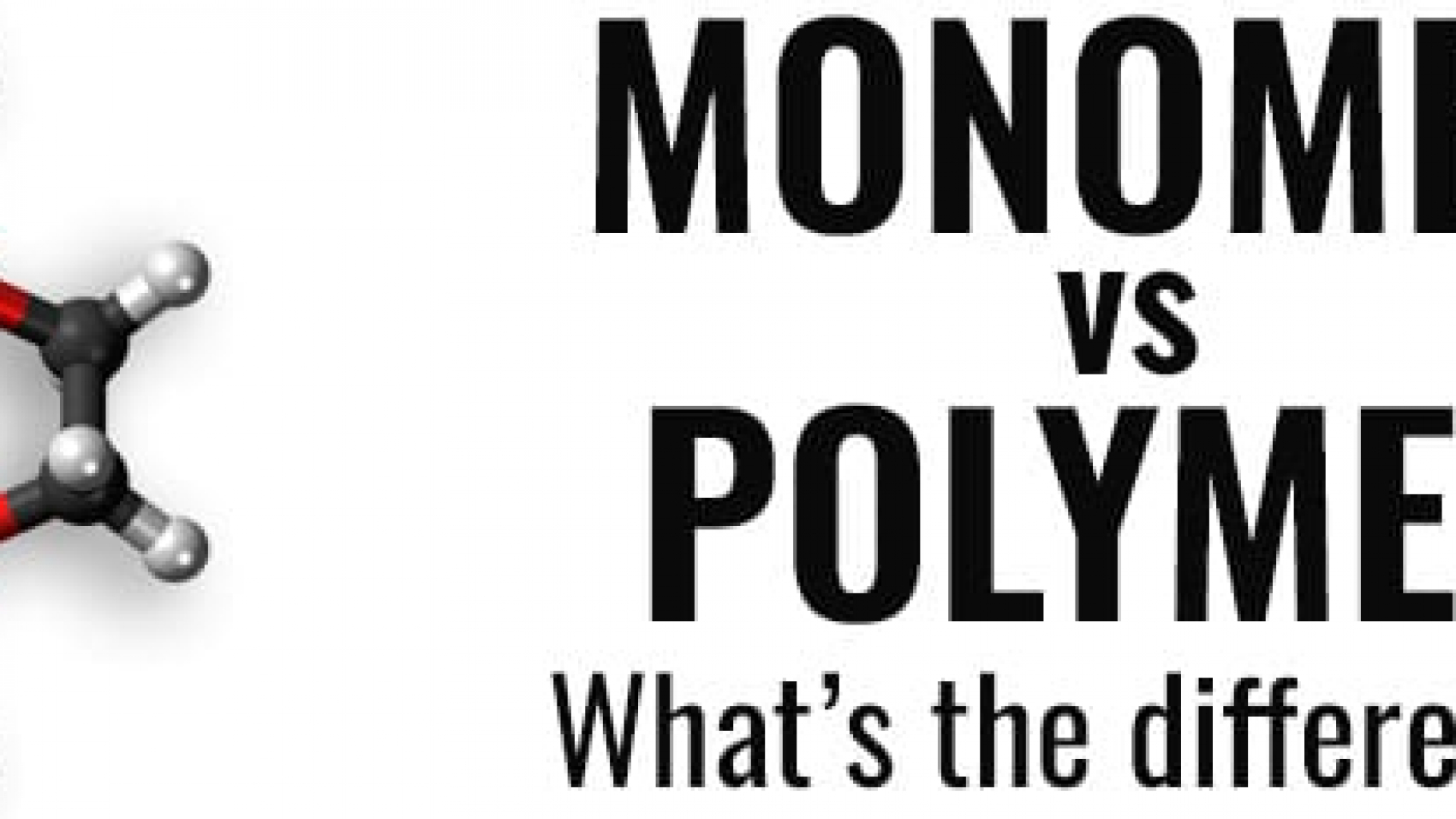In the world of material sciences and plastics, the difference between monomer vs polymer is often confused, if not confusing. Because the terms relate to plastic, they are seen in the broader, wider range of malleable synthetic or semi-synthetic organic compounds that are molded into solid objects. Nevertheless, synthetic monomers and polymers played a significant role in the history of plastics, revolutionizing material sciences in the early twentieth century and consequently emerging to play a prominent role in the modern industrial economy. The ability of chemists to engineer synthetic molecules to achieve a desired set of properties such as electrical conductivity, heat resistance, impact resistance, strength, stiffness, and density changed the world.
So what’s the difference between monomers and polymers?
The main difference between monomers and polymers is that the former is the necessary component that forms the latter. Polymers are comprised of a chain of monomers through a process known as polymerization.
WHAT ARE MONOMERS?
A monomer is a single atom, small molecule, or molecular fragment that, when bonded together with identical and similar types of monomers, form a larger, macromolecule known as a polymer. Monomers bond together to form polymers during a chemical reaction called polymerization as the molecules link together by sharing electrons.
The word monomer comes from the Greek word “mono,” meaning “one,” and “meros,” meaning “part.” As the prefix in monomer implies, think of monomers as a single, simpler basic unit that of and in itself is of lesser importance, but combined, they are the building blocks that form into a greater complex structure. Not to be confused with synthetic monomers, bio-monomers combined form biopolymers, perform various functions in the body and natural environment. In material science, synthetic monomers joined together in a repeated chain form synthetic polymers by forming chemical bonds or binding supramolecularly.
Because there are so many different monomers that can be combined in numerous ways, there are many kinds of plastics. Examples of the monomers that are found in many plastics include organic compounds like:
- Ethylene
- Propylene
- Styrene
- Phenol
- Acetonitrile
- Formaldehyde
- Ethylene glycol
- Vinyl chloride (which polymerizes into polyvinyl chloride PVC)
WHAT IS A POLYMER?
A polymer is a large molecule, or macromolecule, composed of small repeating singular molecular structural units called monomers. The repeating molecular units are joined together chemically through covalent bonds.
The word polymer comes from the Greek “poly” (many) and “meros” (part). As with monomers, a polymer may be a natural (biopolymers) or synthetic macromolecule comprised of repeating units. In material sciences, the terms ‘polymer’ and ‘plastic’ are used interchangeably. However, polymers are a much larger class of molecules that includes plastics and have a broad range of properties that can perform various functions.
While anything plastic is the most common example of a synthetic polymer, broadly speaking, there are for main categories of polymers – thermoplastics and thermosets, elastomers and synthetic fibers. All are found in a wide range of both consumer and industrial products:
- Nylons in textiles and fabrics
- Teflon in non-stick pans
- Polyvinyl chloride (PVC) in pipes
- pDCPD
- Tires
- Electrical switches
- Rubber
- Styrofoam cups
- Disposable PET bottles

